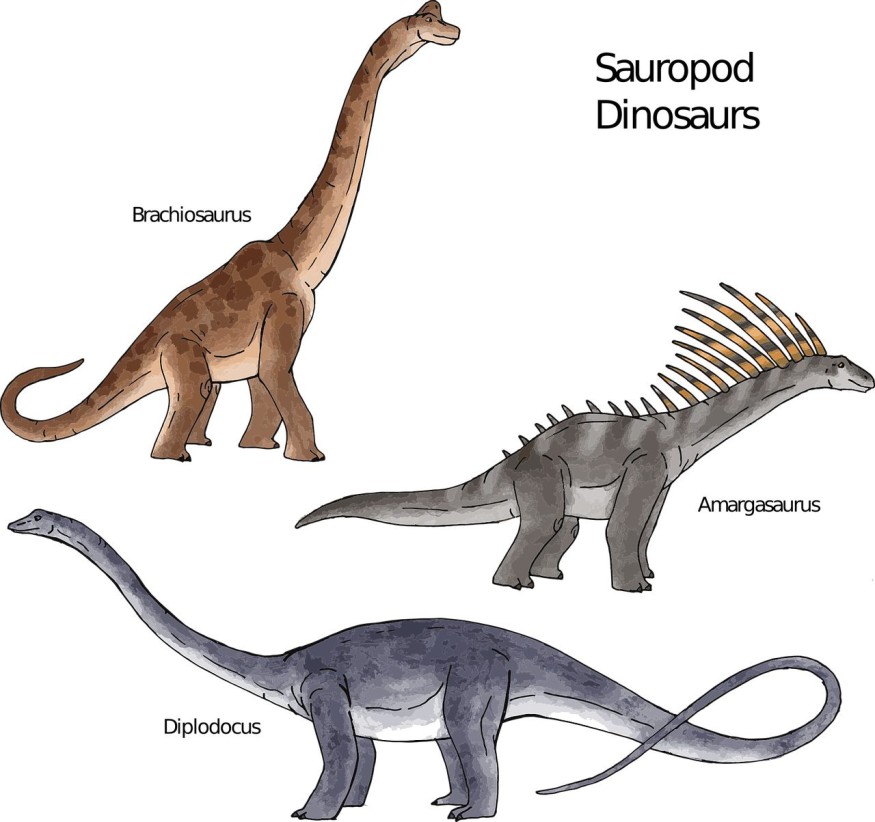University of Bristol researchers found evidence of an early ancestor of sauropod dinosaurs that walked upright, bipedal, and likely moved quickly and agile during the Triassic period about 205 million years ago. They found that the ancestors of sauropod dinosaurs were much smaller, like the wolf-sized Thecodontosaurus.
The team conducted a reconstruction of the limb muscles Thecodontosaurus to study the anatomy of the muscles it used to move and uncover how it evolved from being a bipedal creature to a quadruped or a dinosaur that walks on its four feet.

Reconstructing Limb Muscles to Understand How Early Dinosaurs Lived and Evolved
In the new study, titled "Walking With Early Dinosaurs: Appendicular Myology of the Late Triassic Sauropodomorph Thecodontosaurus antiquus" published in the journal Royal Society Open Science, researchers described a two-legged, medium size Thecodontosaurus that roamed around in what today is the United Kingdom.
It was first described in 1836 and is one of the first-ever dinosaur fossils found in history. Despite that, SciTech Daily reported that new findings using modern technology had surprised scientists as it tells how the earliest dinosaurs lived and evolved.
Ph.D. student Antonio Ballell, the study lead author from Bristol's School of Earth Sciences, said that the university is home to a huge collection of well-preserved fossils of Thecodontosaurus found around Bristol. Amazingly, these fossilized bones preserved some scars and rugosities that still have limb muscles on them.
The muscles were a valuable component of studying the fossils because they could infer their shape and direction when reconstructing them. Doing so would need the exceptional preservation of fossils or understanding of the muscle anatomy of related species.
Since dinosaurs are already extinct, the team had to look at modern crocodiles and birds, which form the archosaurs or "ruling reptiles," to complete the reconstruction process. Study co-author Professor Emily Rayfield said that these muscular reconstructions play a significant role in understanding how extinct organisms once walked and ran.
Read also: Earth's First Giants: Ichthyosaurs Evolved Into Massive Marine Reptiles Faster Than Whales
Sauropod Dinosaurs Were Quick and Agile
Analyses of the fossil suggest that it was in good condition, lodged in a fissure that protected it from the weather, but also showed that its approximately 200 million years old that likely lived in the Late Triassic period, Phys.org reported. Researchers also noted that it somehow resembled velociraptors more than the massive sauropod dinosaurs.
They found that the back legs of the fossil were made for running instead of holding a lot of weight. Meanwhile, the muscles in those legs were used to contract quickly, suggesting that the creature was a fast mover and could escape predators. More so, its hip bones were able to twist as it ran to allow sharp turns and help evade predators.
Furthermore, the team believes that the forelimbs were not used for walking or running because it has lesser muscles. They also wrote in their study that Thecodontosaurus walked upright, which means their forelimbs were flexible enough to reach higher into a tree for food.
Researchers said that studying these fossils presents a unique opportunity to learn more about how they learned to walk on all fours as they grew larger and how early dinosaurs evolved into later forms of dinosaurs.
RELATED ARTICLE : Two New Species of Sauropod Dinosaurs As Large as Modern-Day Blue Whale Recently Unearthed in China
Check out more news and information on Dinosaurs in Science Times.










